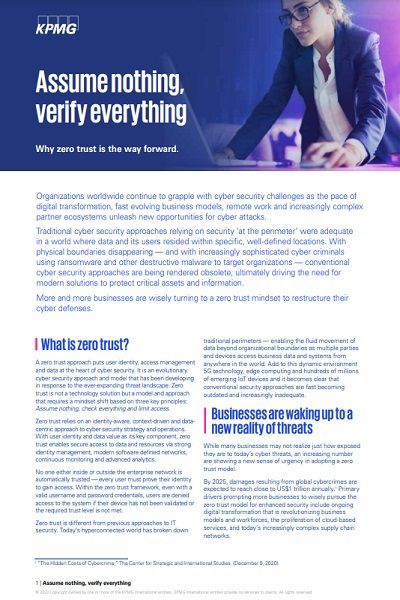Organizations worldwide continue to grapple with cyber security challenges as the pace of digital transformation, fast-evolving business models, remote work and increasingly complex partner ecosystems unleash new opportunities for cyber attacks.
Traditional cyber security approaches relying on security ‘at the perimeter’ were adequate in a world where data and its users resided within specific, well-defined locations. With physical boundaries disappearing — and with increasingly sophisticated cyber criminals using ransomware and other destructive malware to target organizations — conventional cyber security approaches are being rendered obsolete, ultimately driving the need for modern solutions to protect critical assets and information.
More and more businesses are wisely turning to a zero trust mindset to restructure their cyber defenses.
A zero trust approach puts user identity, access management and data at the heart of cyber security. It is an evolutionary cyber security approach and model developing in response to the ever-expanding threat landscape. Zero trust is not a technology solution but a model and approach that requires a mindset shift based on three key principles: Assume nothing, check everything and limit access.
This article explores the objectives, considerations and trends impacting the move to zero trust. It takes a closer look at KPMG’s zero trust model and journey – and explores what’s next for cyber security.
Get in touch
Connect with us
- Find office locations kpmg.findOfficeLocations
- kpmg.emailUs
- Social media @ KPMG kpmg.socialMedia






